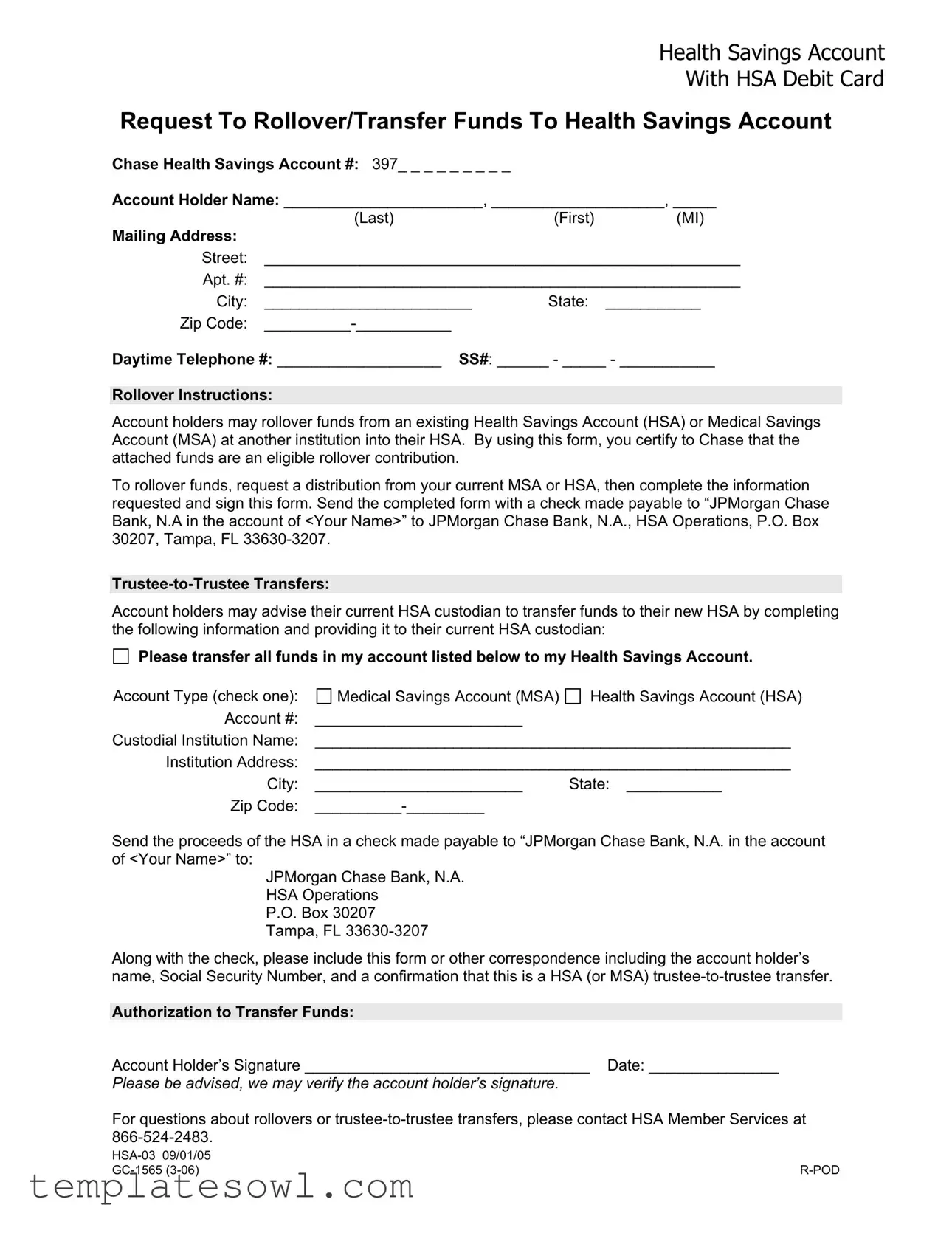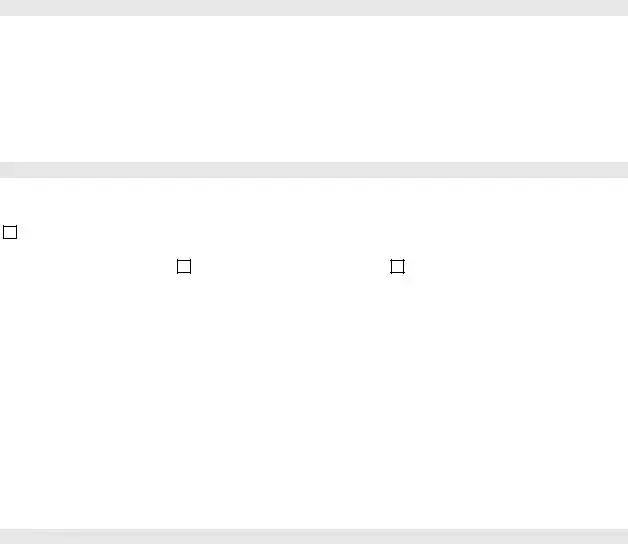Health Savings Account
With HSA Debit Card
Request To Rollover/Transfer Funds To Health Savings Account
Chase Health Savings Account #: 397_ _ _ _ _ _ _ _ _
Account Holder Name: _______________________, ____________________, _____
|
(Last) |
(First) |
(MI) |
Mailing Address: |
|
|
|
Street: |
_______________________________________________________ |
Apt. #: |
_______________________________________________________ |
City: |
________________________ |
State: |
___________ |
Zip Code: |
__________-___________ |
|
|
Daytime Telephone #: ___________________ SS#: ______ - _____ - ___________
Rollover Instructions:
Account holders may rollover funds from an existing Health Savings Account (HSA) or Medical Savings Account (MSA) at another institution into their HSA. By using this form, you certify to Chase that the attached funds are an eligible rollover contribution.
To rollover funds, request a distribution from your current MSA or HSA, then complete the information requested and sign this form. Send the completed form with a check made payable to “JPMorgan Chase Bank, N.A in the account of <Your Name>” to JPMorgan Chase Bank, N.A., HSA Operations, P.O. Box 30207, Tampa, FL 33630-3207.
Trustee-to-Trustee Transfers:
Account holders may advise their current HSA custodian to transfer funds to their new HSA by completing the following information and providing it to their current HSA custodian:
Please transfer all funds in my account listed below to my Health Savings Account.
Account Type (check one): |
Medical Savings Account (MSA) |
Health Savings Account (HSA) |
Account #: |
________________________ |
|
Custodial Institution Name: |
_______________________________________________________ |
Institution Address: |
_______________________________________________________ |
City: |
________________________ |
State: ___________ |
Zip Code: |
__________-_________ |
|
Send the proceeds of the HSA in a check made payable to “JPMorgan Chase Bank, N.A. in the account of <Your Name>” to:
JPMorgan Chase Bank, N.A. HSA Operations
P.O. Box 30207 Tampa, FL 33630-3207
Along with the check, please include this form or other correspondence including the account holder’s name, Social Security Number, and a confirmation that this is a HSA (or MSA) trustee-to-trustee transfer.
Authorization to Transfer Funds:
Account Holder’s Signature _________________________________ Date: _______________
Please be advised, we may verify the account holder’s signature.
For questions about rollovers or trustee-to-trustee transfers, please contact HSA Member Services at 866-524-2483.

